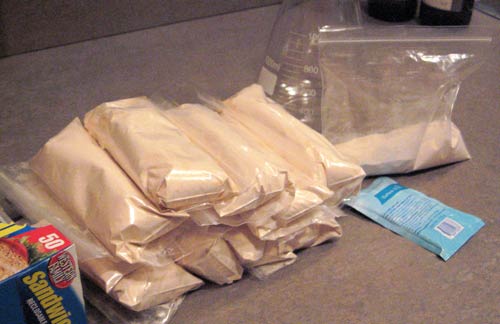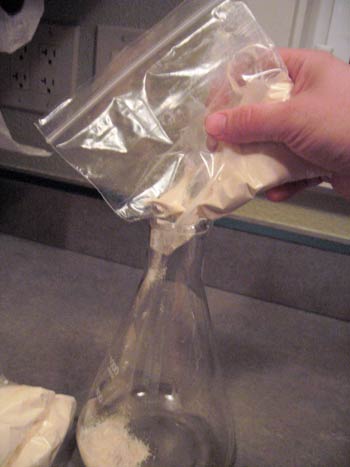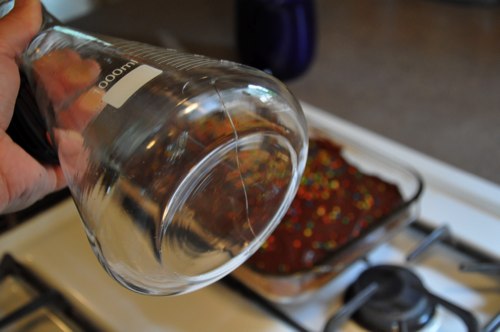I think I may have reached my pinnacle for home brewing innovation. Well, not really, but I had a great idea so simple and obvious, I thought I’d share it. It has to do with yeast starters. Instant yeast starters. We all know having a good yeast starter is the first step to making a great beer. And sometimes, you just want to quickly pitch a starter and get back to your Friday night. My standard yeast pitching method involves pitching 1 cup of DME with a pinch of yeast nutrient into a 1 liter beaker. I break out the nappy bag of DME that’s sticky from steam and humidity, pour a cup, and try to then get the DME in to the flask through a funnel without spilling or stopping the funnel. One of the two always happens.
My new method, as of tonight, is to buy a bag of DME, pre-measure in to ziploc bags with a pinch of yeast nutrient, then pack away in a safe container. Then, when it’s time to make a starter, just cut the bottom corner off a baggie and pour it into the flask. Add water, bring to a boil, cool, and pitch.


I feel a little bad about all the additional baggies, but it’s really freakin’ slick. And its still less material than a pitchable yeast pack and like 4 bucks cheaper.


